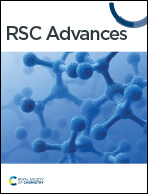Overall perspective of electrospun semiconductor metal oxides as high-performance gas sensor materials for NOx detection
Abstract
Gas sensors based on nanostructured semiconductor metal oxide (SMO) materials have been extensively investigated as key components due to their advantages over other materials, namely, high sensitivity, stability, affordability, rapid response and simplicity. However, the difficulty of working at high temperatures, response in lower concentration and their selectivity are huge challenges of SMO materials for detecting gases. Therefore, researchers have not stopped their quest to develop new gas sensors based on SMOs with higher performance. This paper begins by highlighting the importance of nitrogen monoxide (NO) and nitrogen dioxide (NO2) detection for human health and addresses the challenges associated with existing methods in effectively detecting them. Subsequently, the mechanism of SMO gas sensors, analysis of their structure and fabrication techniques focusing on electrospinning technique, as well as their advantages, difficulties, and structural design challenges are discussed. Research on enhancing the sensing performance through tuning the fabrication parameters are summarized as well. Finally, the problems and potential of SMO based gas sensors to detect NOx are revealed, and the future possibilities are stated.

- This article is part of the themed collection: 2024 Reviews in RSC Advances


 Please wait while we load your content...
Please wait while we load your content...